Customer Services
Copyright © 2025 Desertcart Holdings Limited
Desert Online General Trading LLC
Dubai, United Arab Emirates
![1000 Watt Pure Sine Wave Power Inverter ETL UL458 12V DC to 110V 120V AC 1000W for Home RV Truck Off-Grid Solar Compatible with Lithium Battery with LCD Display [3 Years Warranty] by VOLTWORKS](https://m.media-amazon.com/images/I/71WxYNFs+wL.jpg)

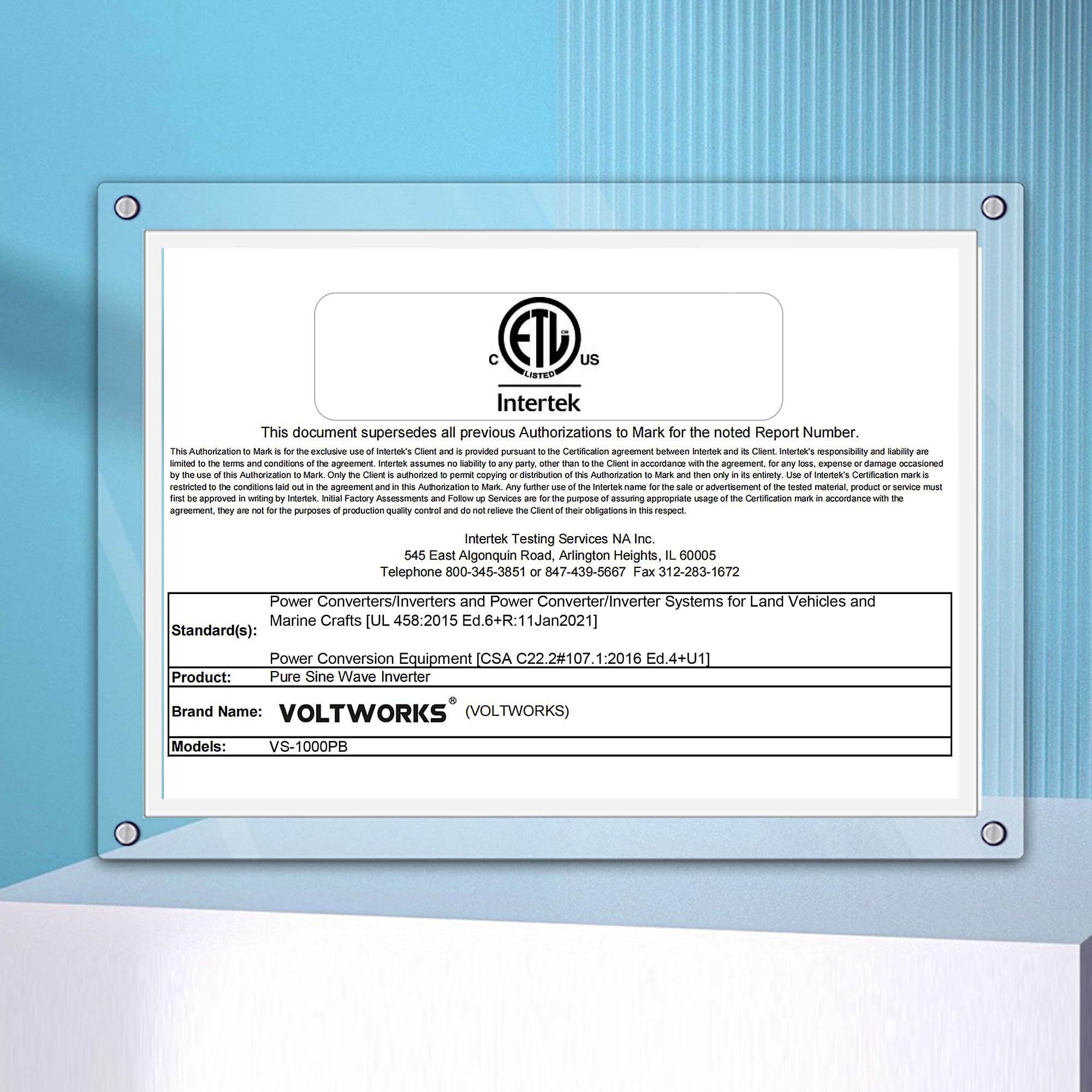
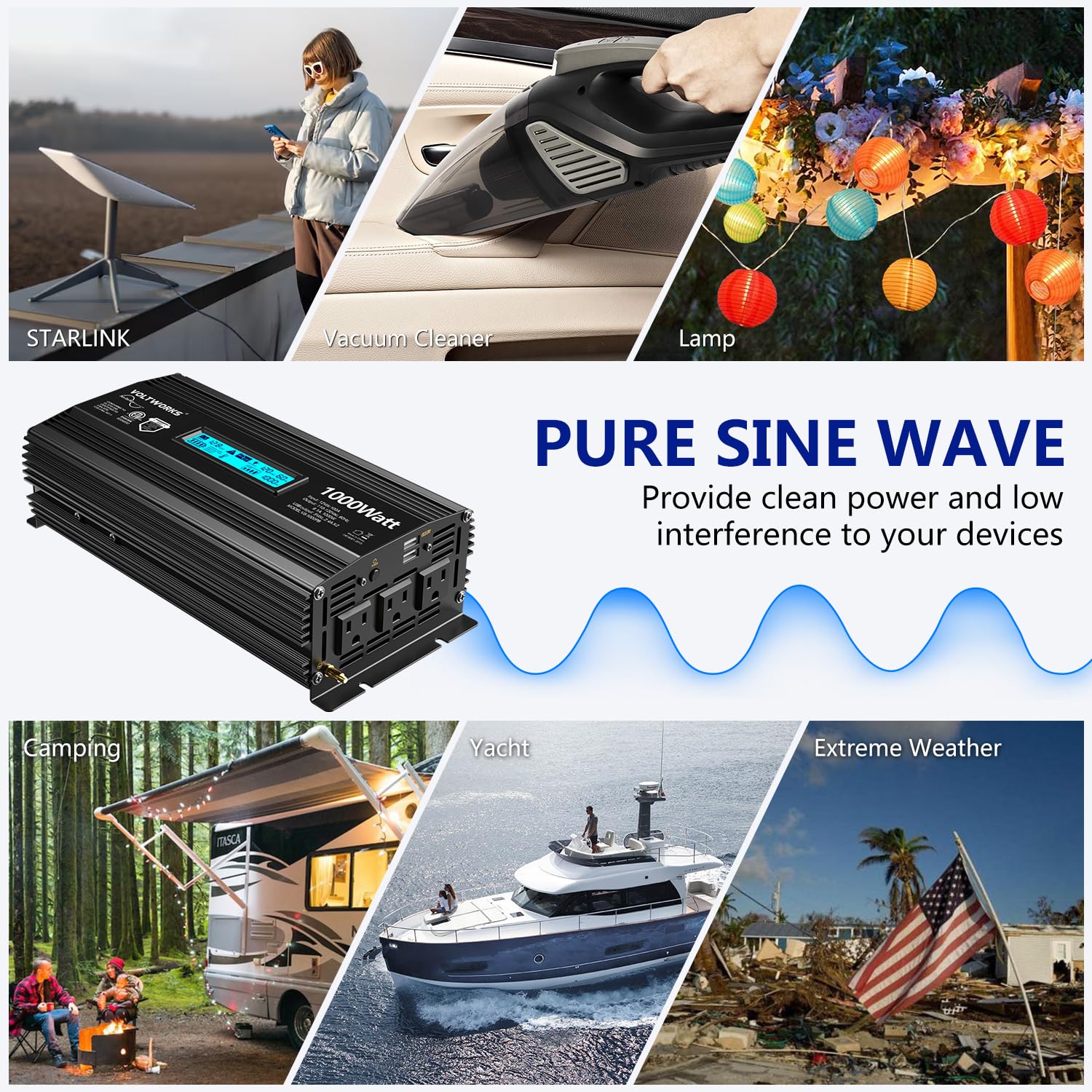




🔋 Power Your Adventures with Confidence!
The VOLTWORKS 1000 Watt Pure Sine Wave Power Inverter is a robust solution for converting 12V DC to 120V AC power, featuring 3 AC outlets and 2 USB ports. With a smart LCD display for monitoring, advanced safety features, and a 36-month warranty, it's perfect for home, RV, truck, or off-grid solar applications.
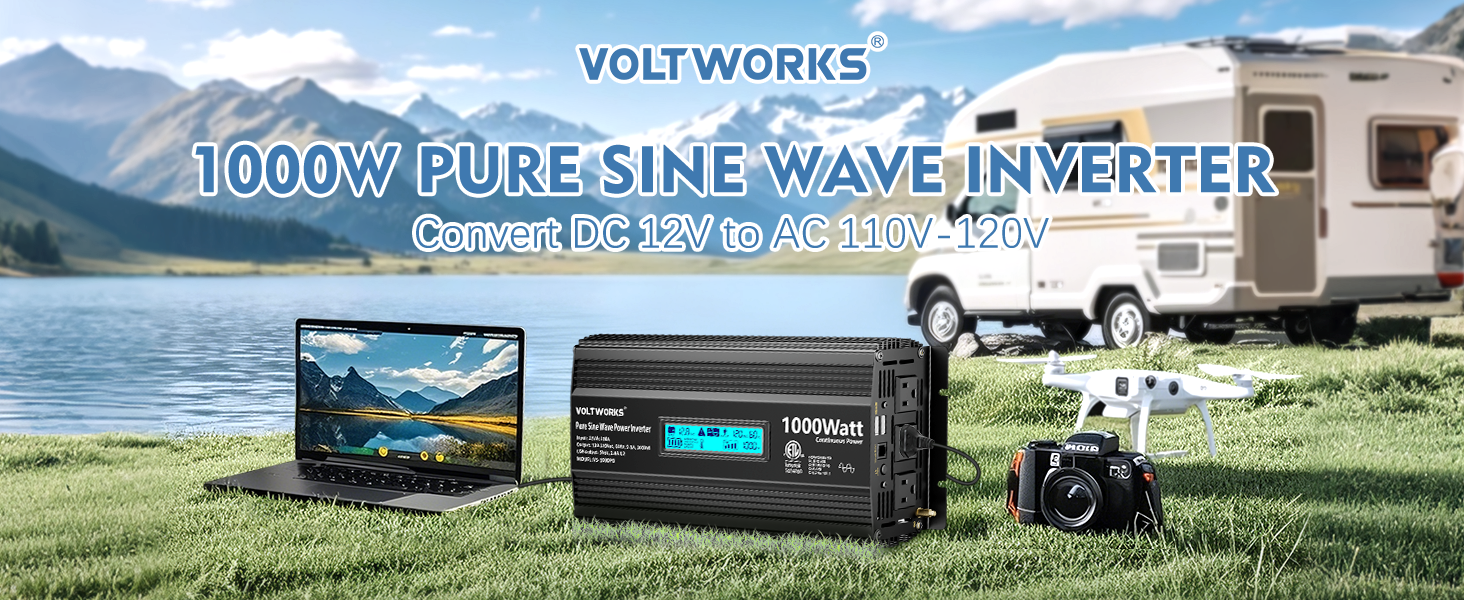
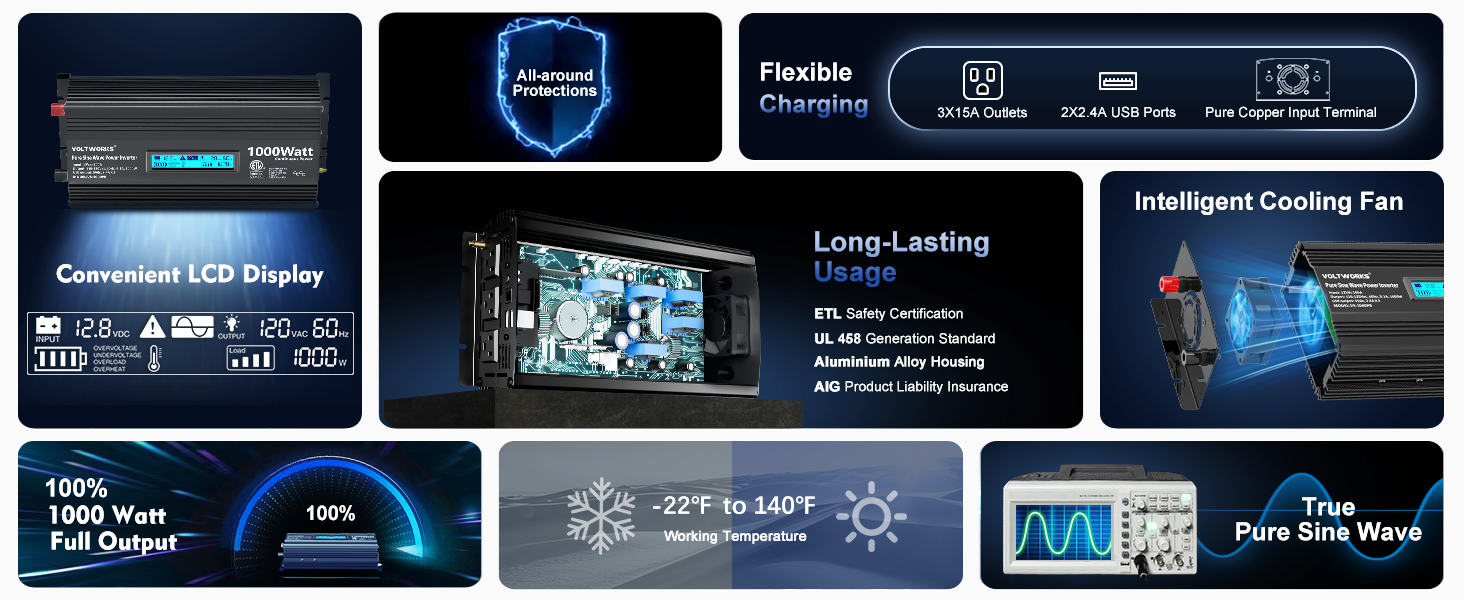
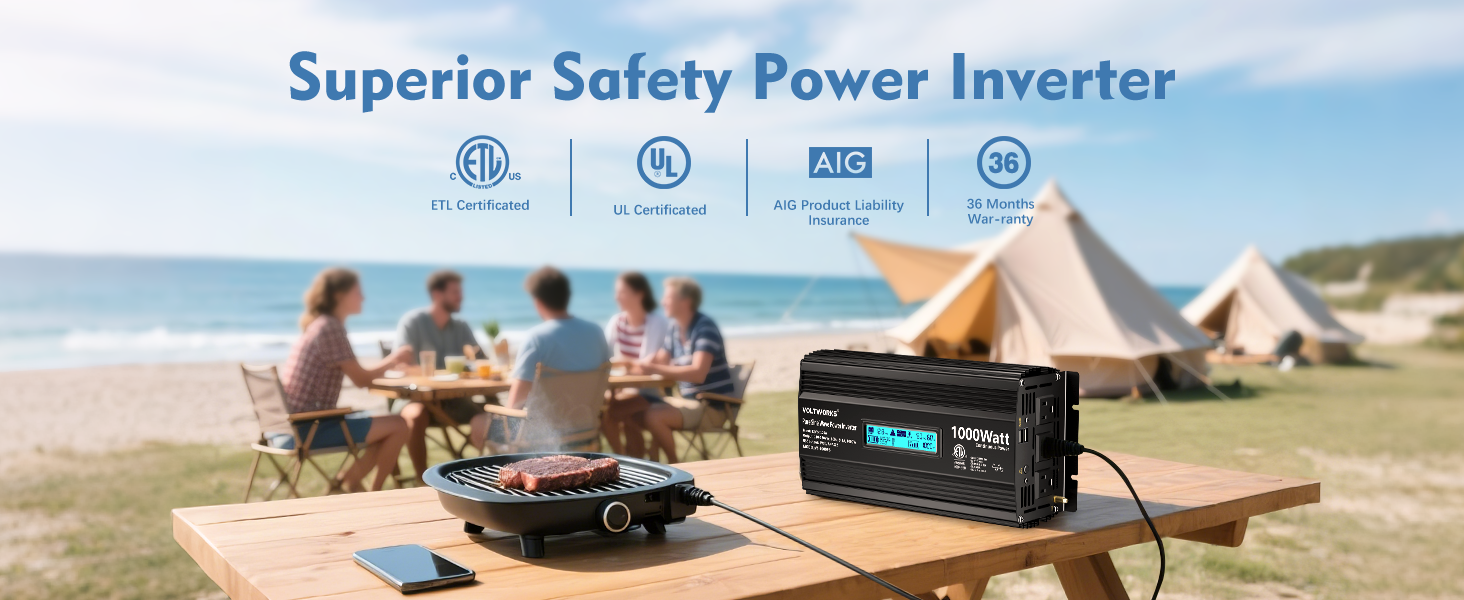
| Item Weight | 5.62 Pounds |
| Item Dimensions L x W x H | 12.4"L x 6"W x 3.3"H |
| Color | Black |
| Specification Met | ETL UL458 |
| Standby Power Shutoff | 90% |
| Output Voltage | 120 Volts |
| Peak Output Power Watts | 1200 |
| Inverter Capacity Volt-Amp | 1000 |
| Electrical Output Waveform | Pure Sine Wave |
| Frequency | 6E+1 Hz |
| Display Type | LCD |
| Number of Outlets | 5 |
| Input Voltage | 12 Volts |
| Output Power | 1000 Watts |
| Power Source | Battery Powered,Corded Electric |
| Wattage | 1000 watts |
| Battery Capacity | 1E+2 Amp Hours |
| Voltage | 120 Volts (AC) |
C**S
Quality product with good support
In a sea of look-alike inverters from unknown brands on Amazon, how does one decide what to buy? This is a detailed review of a Voltworks 1500W continuous (3100W 2 sec peak) inverter, why I bought it and how it has performed over the first month.Why Voltworks:I chose this company as it has been around for several years and has an online reputation for producing decent products and standing behind its 18-month warranty. I believe that it also manufactures Giandel and Leesky inverters, offered with slightly different features and prices. Though my inverter has had no problems so far, I asked customer service several questions and received answers within a day or so. “Alice” was clearly not reading from a call-center script, with detailed replies to difficult questions.In the box:The cardboard box has internal foam for protection, and includes the inverter, cables, remote control, spare fuses, and user manual packed neatly. The inverter itself measures approx. 8x13x4”, weighs 8.6 lbs, and appears solidly built — all metal and with heat-disippating fins all around. The 2’ red and black battery cables are paired 16mm2, which works out to almost 2AWG, i.e., better than the 4AWG cables in the Amazon listing. The wired remote control has 4 screws for attachment, 2 each of 2 types for use on different surfaces, and 3 spare 40A fuses are also included. A sheet of paper states that included pads are to be attached to the inverter base plate, but mine came with 4 cushioned pads already installed.Initial start-up:A key thing to remember is that before using it for the first time (or after a long period of no usage), the inverter must be run without a load for 30-60 minutes. This is to allow the capacitors time to charge properly, otherwise one risks the possibility of an explosion or reduced life expectancy. After an initial 30-minute warmup, the inverter did make some sound on the first load test, but quieted down on subsequent trials.Loads tested:I am using it in a house emergency generator system powered by my Toyota Prius, whose 12V circuit can spare a continuous 1200W at best, far below the inverter’s 1500W rated capacity. It is good practice to select an inverter rated 25% above its anticipated load anyway. With some combination of full-size fridge, small space heater, rice cooker, fans and lights (not all at the same time), I tested continuous loads up to 900W and initial surges well above that when appliances were turned on, as measured by a watt meter that shows range. I did not test the USB or hardwired outlets.System controls:The inverter’s low voltage cutoff system worked as stated in the manual, switching off momentarily at the voltage I set and restarting seconds later when the voltage had increased to normal levels. My setup does not need the remote control with 15’ cable, but it worked fine. The inverter’s fans were not noisy, and turned on only when the load or temperature exceeded certain levels. The approx. 1”x4” display has lots of data but was easy to read, and output wattage shown was consistent with that of my external watt meter.Connections:Input cable connections are covered with plastic caps for protection from shorts — a nice touch, though it means that cables to the battery can exit in only one direction if the (optional) caps are used. I spliced an additional cable to the included 3’ 14AWG ground cable and connect it to the earth with an aluminum tent peg. Note that per a Voltworks online video, opening the inverter to replace fuses requires unscrewing the output side plate’s 4 screws and sliding out the center panel of the top plate, after disconnecting the cable feeding the display. I am not sure this will be quite as easy as demonstrated.Potential improvements:* The almost flush, black power switch on the black side plate is hardly visible, especially in low-light emergency conditions, and should be a brighter color.* The 28 page user manual is far better than those of some competitors. However, it does have several errors; I was told that an updated version is being rolled out.* The included battery cables, while adequate, do not match the quality of Voltworks cables I purchased for use elsewhere in my system. Those are rated for 105C, with thicker and better-finished heat shrinks, and smaller 10mm lugs.Conclusion:All in all, I am pleased with this purchase and will rate it 5 stars for initial product quality and responsive customer service. I hope this review has been helpful, and commit to updating it as my experience warrants over the next few years.
J**H
Confidence in VOLTWOrks' Product
My initial experiences with VOLTWorks were less than ideal, primarily due to an unusual incident involving a malfunctioning unit that produced louder-than-expected humming sounds. I reached out to VOLTWORKS support, who proved to be both helpful and diligent in their responses and follow-up communications. Subsequently, I was provided with a replacement unit.After a disappointing experience with an earlier model, I put the new device through rigorous tests under various load conditions. Its real-world performance was conclusively demonstrated during a recent power outage caused by a wildfire in my home state of New Jersey. The inverter effectively powered crucial refrigerated items, preserving medication and food, for over 24 hours without fail. Throughout this duration, it functioned flawlessly, showing no signs of issues such as noise, buzzing, or overheating. This device is exceptional and lives up to the high standards I had anticipated.
K**D
Great for solar
Had this thing for a while now in my mancave with solar and it doesnt get over used. No hi power consumption or anything so it is probably happy. With that being said it works great and I haven't had any issues with it. Fans come on and off when it goes over 400 watts I think and ive never felt it get hot. My set up is a 100ah 12v battery and this works fine
M**.
Works great!
Product works REALLY well, can't complain about it's functionality one bit! Plug in and USB options work great and have had zero issues. The only issue I have is that the screen is only visible if you are looking straight at it, if you look at an angle then you can't read it at all, just looks blank. Other than that, it is very sturdy and work remarkably well!
A**R
Works fine with LiFePO4 batteries
Got this inverter for my mini-camper (S10) set-up. It is fed by two 12v 100Ah LiFePO4 batteries in parallel which are charged by a 40A DC-DC charger coming off my truck's agm battery and 200A alternator (4.3l v-6 Chevy). This Inverter puts out plenty of power for small space heater, electric blanket(s), small microwave, m18/m12 milwaukee battery charger(s) and easily charges my Yoshino BT2000SST power station at full speed (about an hour from empty to full charge!) I'm very pleased with this inverter and installation was fun, simple and problem-free. [I used thick cables to connect this inverter with the Deespaek batteries and ran a 2-gauge marine-grade cable inside the truck's frame rail from the engine bay to the camper via a rubber-grommeted hole in the front corner of the living-area/truck bed. I also ran a 2-gauge ground cable directly to a sanded-down hole on the frame rail below the camper/truck bed. I fused all positive connections and used breakers between everything for added safety. I have solar panels for clear, sunny days or when set-up at an un-shaded camp-site but for mobile, on-the-go power or device-charging while driving, this is the ticket! Thanks for reading!
Trustpilot
1 month ago
1 month ago